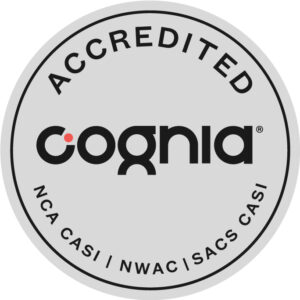
Learning how to be mentally present is a social and emotional skill that will help students ensure success in their future. And with the average attention span of students gradually decreasing, teaching mindfulness in the classroom is becoming increasingly popular. Especially because mindfulness can be extremely beneficial for students and can help them be present despite major distractions.
Although teaching students the concept of mindfulness can be difficult, it definitely isn’t impossible. Here are a few ways you can incorporate mindfulness in the classroom and why you should.
There are many benefits to practicing mindfulness that can help students in their academic and personal life. Mindfulness has been proven to reduce depression and anxiety as well as strengthen memory and compassion. It also encourages emotional maturity, self-awareness, and helps students better respond and cope with challenges.
To begin teaching mindfulness, students need to first understand what true mindfulness is. Not only is it being present and aware of the moment but it’s also about accepting your present thoughts and feelings. It not only helps students to focus but also encourages them to identify and address strong emotions so that they don’t inhibit learning. This focus and acceptance of emotions are why mindfulness is often considered part of social-emotional learning.
Here are a few ways teachers can teach mindfulness in the classroom.
Provide students with a piece of candy or a treat. Then ask them to think about all of the sensations of the food as they chew. What does it taste like? What does it feel like? Students can journal these feelings or express their observations in art. This can also be used as a way to teach the five senses and can offer a great tie-in for science lessons.
Another idea is incorporating nature and the outdoors into your lesson. Consider taking a small field trip outside for a short walk. Have them notice everything around them, from the touch of the trees and ground to the sounds of the birds.
Lastly, create mind jars so students can explore their sense of smell. Fill a jar with items of strong and familiar scents (like cinnamon, flowers, coffee, or popcorn), and then have the students close their eyes and guess the items by using their sense of smell.
Another exercise is having students sit quietly, walk slowly, or even do some simple yoga and reflect on what they are feeling in their bodies at that moment. Is their arm asleep? Is there body tense? If so, what part and how can we release the tension? What are they feeling emotionally?
A key tenet of mindfulness is to recognize those emotions and accept them.
Instruct your students to close their eyes and focus on their breathing. You can place one of your hands on your belly or your chest and feel it rise and fall. Have them pretend to inflate a balloon or bring a Hoberman sphere toy to class for visual representation. This can help students to calm both their body and their mind and can easily be repeated as a routine throughout the day or before tests.
Mindfulness and meditation go hand-in-hand. Have the students sit down on the floor or at their desks and take a moment to focus and identify their thoughts and feelings. Maybe include a word or phrase of affirmation at the end of every session. Afterward, they can journal their thoughts and emotions.
In addition, instead of just using exercises, schools can incorporate programs as a way of effectively teaching mindfulness in the classroom. For example, Mindful Schools, Learning to Breathe, and Mind Up teach students and teachers the foundations of mindfulness. Programs like these can better prepare teachers on how to successfully apply mindfulness in the classroom as well as lead to more promising results.
In fact, a study on mindfulness in the classroom discovered that students trained in mindfulness scored higher in math and social behaviors than those that did not.
Taking Care of the Mind at Renton Prep
At Renton Prep, we acknowledge that teaching mindfulness in the classroom can lead to lifelong benefits for students. We strive to provide our students with a challenging and rewarding curriculum, while also paving the way in creating emotionally strong leaders for the next generation.
To learn more about mindfulness or if you have any questions about enrollment, please contact us.

